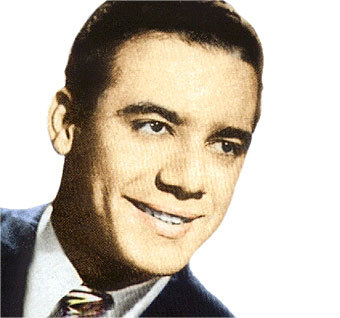Puerto Rican Bobby Capó stands out among the most popular Latin American singers in the 1940s and 1950s. This is the stage name of Felix Manuel Rodríguez Capó, born in the town of Coamo, on January 1, 1921, who also stood out as composer, among the most important of the Caribbean nation, with Rafael Hernández, Pedro Flores and Tite Curet.
The teenager who sang
He began singing on the radio when he was 15 years old; though two years earlier he had composed his first song: Carmen. In 1939 he joined the Quartet Victoria, of Rafael Hernández, as a singer.
Bobby Capó’s career was extensive and allowed him to record with numerous musical groups, among which it can be mentioned of the 1940s, the orchestra of the Cuban-Catalan Xavier Cugat, with whom he sang Bilongo, also known as La Negra Tomasa; in addition to the Cuarteto Caney and the groups of Machito, Roberto Quintón, Noro Morales ...
The performances in Cuba gave a turn to his career, while he became an idol of the listeners. From the radio he projected his voice and style to the Spanish-speaking world, including the United States, a nation where success also accompanied him because the singer developed the quality of singing in Spanish and English with his unique own way of interpreting the rhythmic bolero.
He performed in nightclubs in New York City in 1946 with Cuban Miguelito Valdes, the world famous Mister Babalu. It is claimed that it was Miguelito who recommended him to perform at the station RHC Cadena Azul, of Amado Trinidad, at the start of a relationship with the Cuban public that enriched him as an artist, after joining the orchestras of Rodrigo Prats, Adolfo Guzman and Avelino Muñoz, with whom he recorded the very popular song La Múcura, of the authorship of the Colombian Antonio Fuentes.
Bobby Capó and Sonora Matancera group
Bobby Capó felt in Cuba like in his own house and on the island he stayed for long periods till materializing a connection with the Sonora Matancera group, alongside with his compatriot Daniel Santos, in a group that symbolizes a golden era of popular music in Latin America.
In 1952, Capó traveled to Cuba to record with the Sonora Matancera for Seeco record label one of his most constant hits and also of his authorship: Piel canela.
He recorded more than 400 songs and wrote hundreds—bolero genre was his strong point, but rumbas, guarachas, and other genres were included—some of them sang by other musicians. El Negro Bembón, Luna de miel en Puerto Rico, Soñando con Puerto Rico, Y llorando me dormí…are among his most known songs.
His discography is extensive, and includes the albums Bobby Capó Sings, Con La Sonora Matancera, Invitación al Amor, La Múcura, Yo Canto para Ti, Piel Canela and many others.
From the microphone to the set
A versatile artist, of great sympathy and proven success, he gave some steps into cinema and his last appearance as an actor was in the film El Jibarito Rafael, a tribute to composer Rafael Hernandez.
Bobby Capó died in New York on December 18, 1989, at age 67. His body was moved to Puerto Rico to be buried in the municipal cemetery of Coamo, his hometown.
Bobby Capó is among the singers who marked a time with his voice; a voice that won’t certainly be so distant to us if his recordings, where his musicality is heard, are listened to.
Translation: Lisandra Alapón (Cubarte)


Deje un comentario